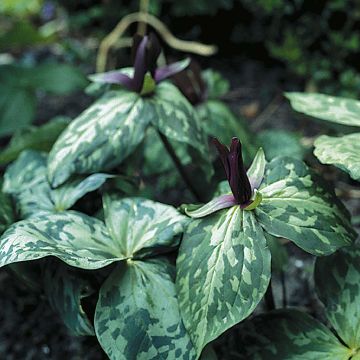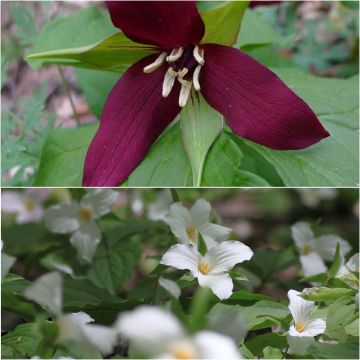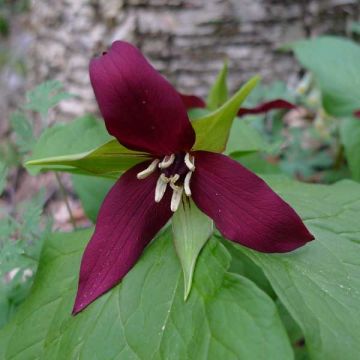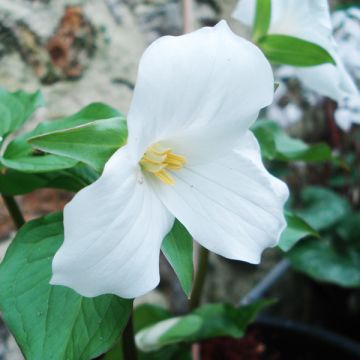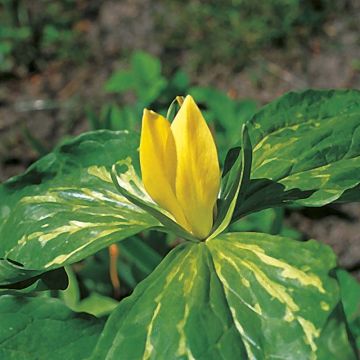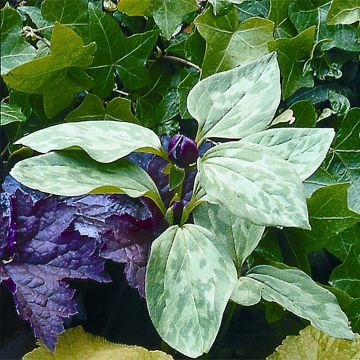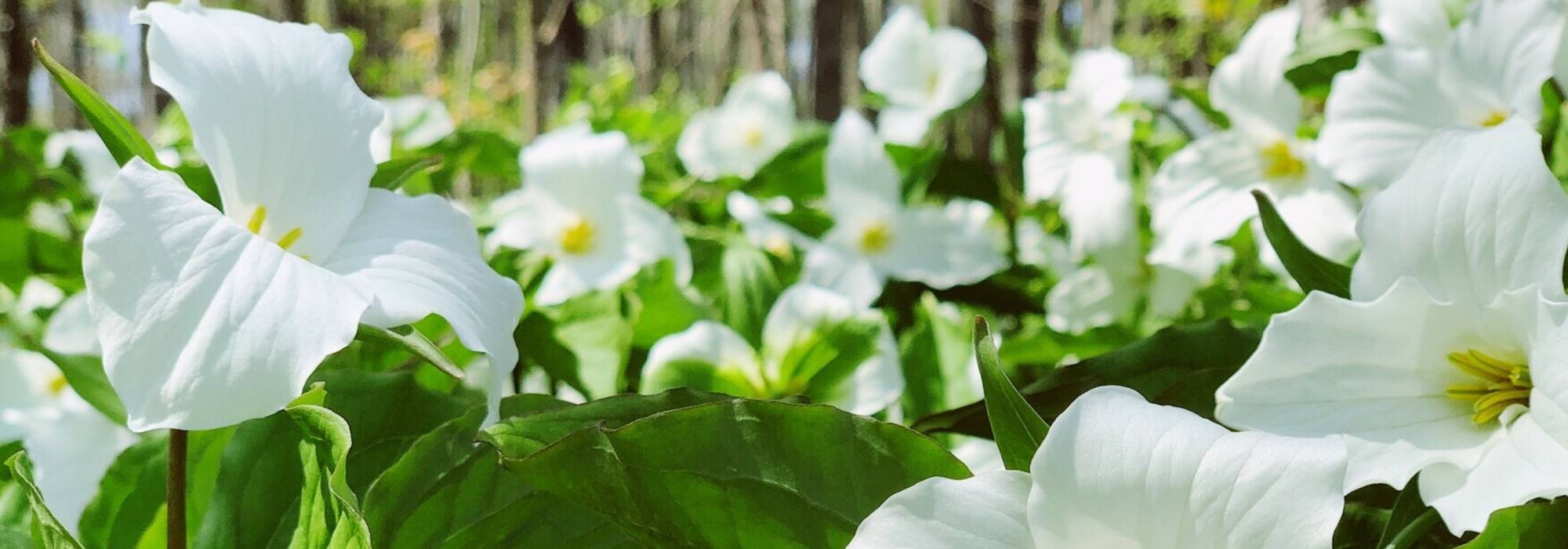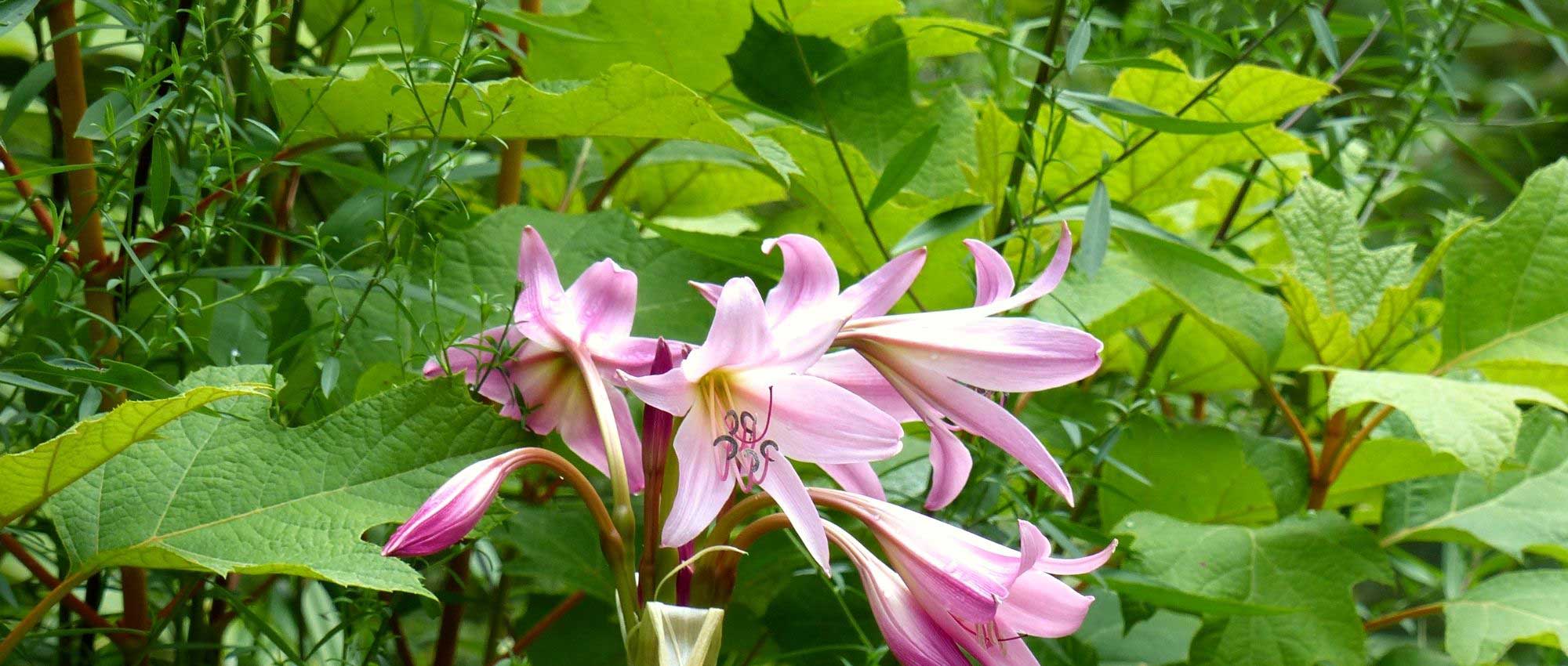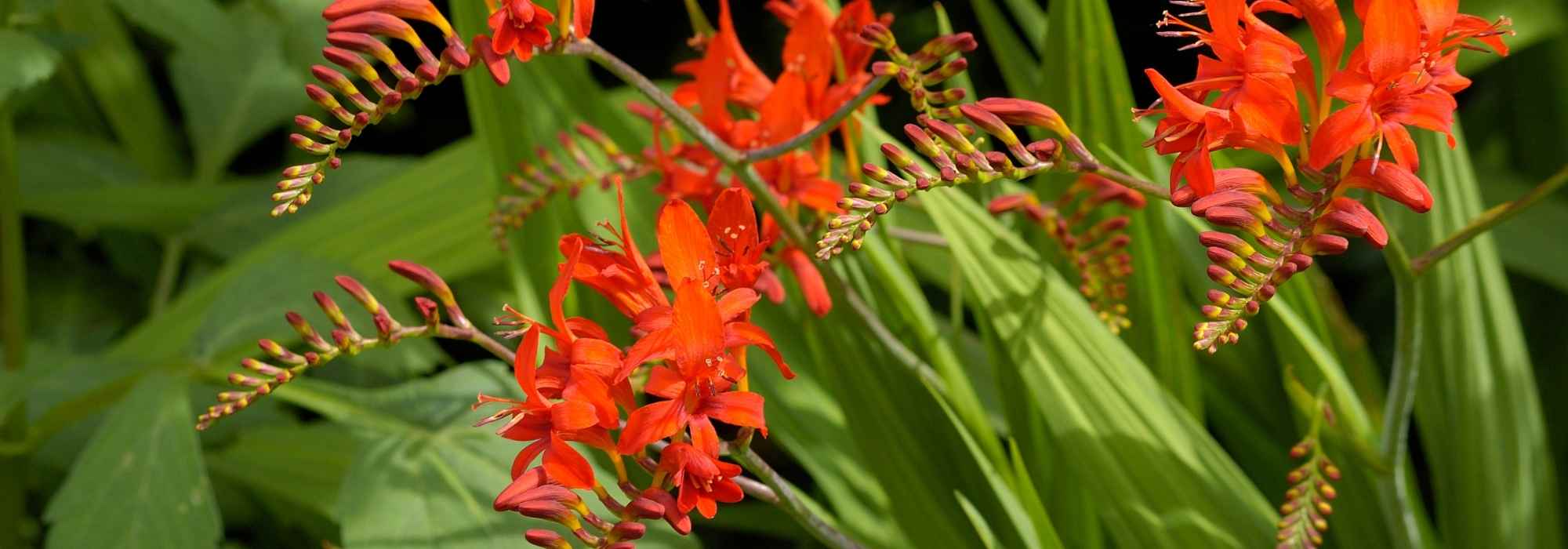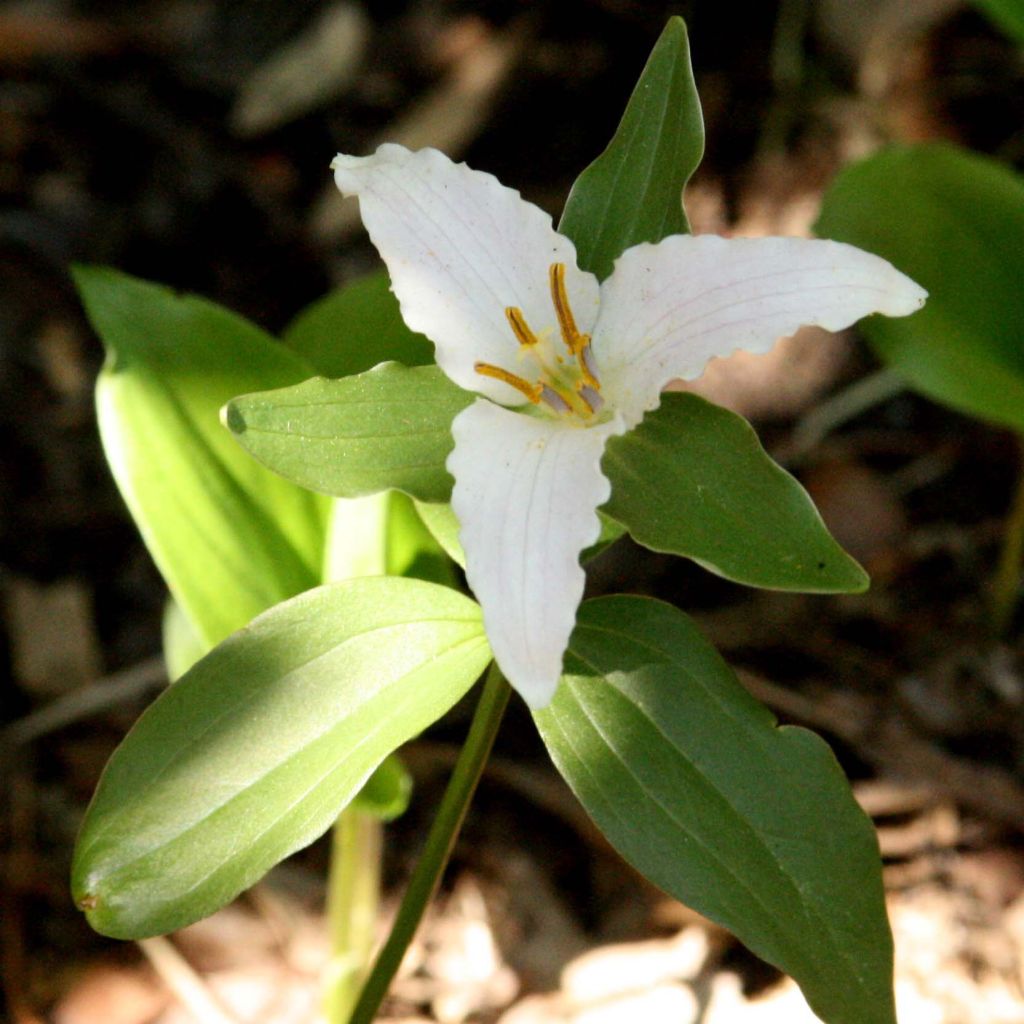

Trillium pusillum -Trille nain
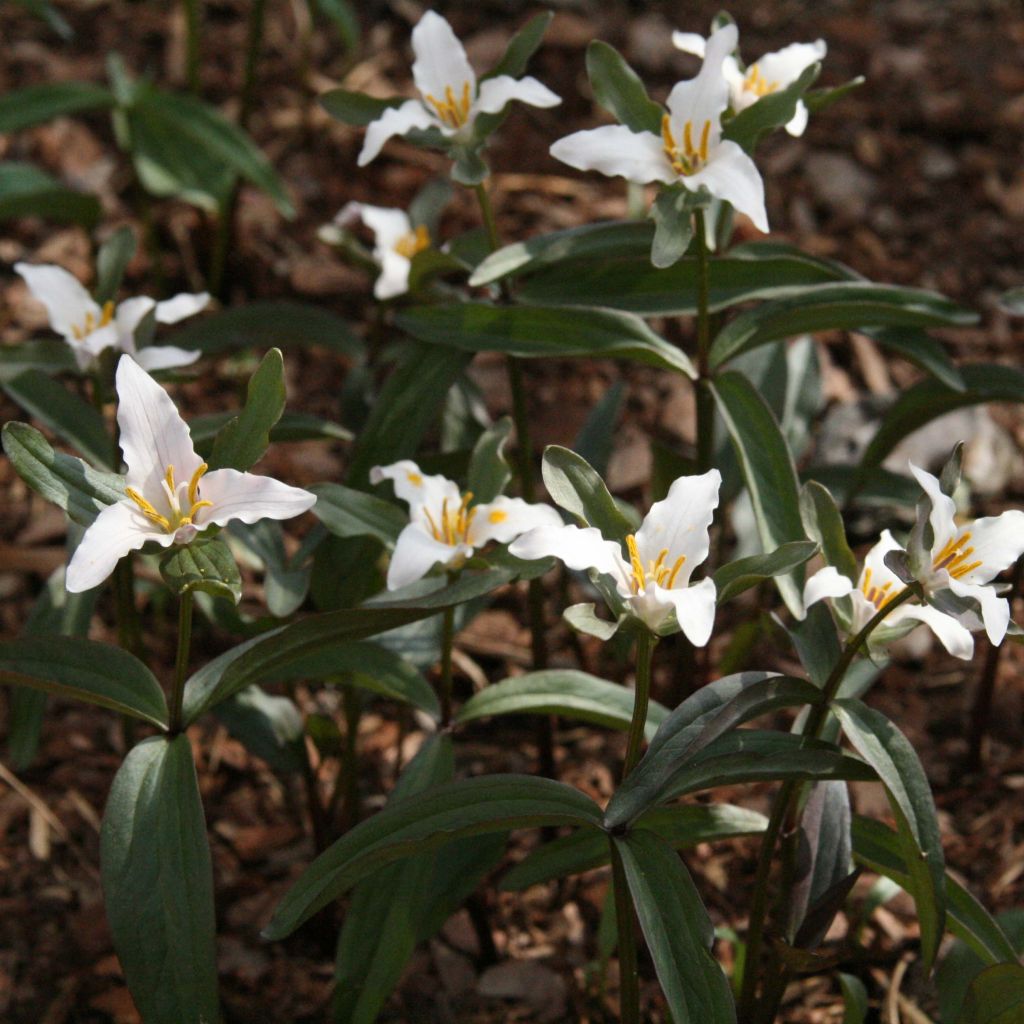

Trillium pusillum -Trille nain
Trillium pusillum - Dwarf Trillium
Trillium pusillum
Dwarf Trillium, Least Trillium, Bashful Trillium
Special offer!
Receive a €20 voucher for any order over €90 (excluding delivery costs, credit notes, and plastic-free options)!
1- Add your favorite plants to your cart.
2- Once you have reached €90, confirm your order (you can even choose the delivery date!).
3- As soon as your order is shipped, you will receive an email containing your voucher code, valid for 3 months (90 days).
Your voucher is unique and can only be used once, for any order with a minimum value of €20, excluding delivery costs.
Can be combined with other current offers, non-divisible and non-refundable.
Why not try an alternative variety in stock?
View all →This plant carries a 12 months recovery warranty
More information
We guarantee the quality of our plants for a full growing cycle, and will replace at our expense any plant that fails to recover under normal climatic and planting conditions.
Does this plant fit my garden?
Set up your Plantfit profile →
Description
Trillium pusillum is one of the smallest species of North American trilliums, but also one of those that bloom the earliest in spring. This small perennial offers, above a trio of lush green leaves, a widely open flower with 3 white, wavy petals that quickly turn pink. It thrives in moist, humus-bearing soils and woodland settings where it slowly spreads through its rootstock. Quite rare in cultivation and little known to European gardeners, trilliums should to be tried in shaded, moist areas. They eventually form an unusual spring carpet in a wooded garden or a shaded rockery.
Trillium pusillum, long classified in the family Liliaceae, now belongs to the Melanthiaceae family. It is a distant North American cousin of the fragrant Solomon's seal that populates our European woodlands. It is native to the southeastern and central-southern United States (from Oklahoma to Maryland), where it blooms in early spring in various types of habitats. It can be found in savanna-like formations as well as in swamps and turf moors, in forests, woods, and fields, always on acidic soil.
Trilliums are very unique plants that do not develop true stems or true leaves. The vegetation that emerges in spring is actually a flowering, consisting of an upright petiole, an extension of the rootstock, bearing a colourful flower that sits above bracts that resemble leaves. The true leaves, tiny and scale-like, are found on the petiole of the flowers.
A herbaceous and perennial plant, Trillium pusillum develops very early in spring from a slender, branching, horizontal underground rootstock that does not like to be disturbed. It goes dormant as soon as the soil dries out, during the summer, or in autumn due to the cold. The plant produces short, slender leafy stems, rarely exceeding 15 cm in height. Thanks to its rootstocks, this Trillium will slowly form small colonies occupying at least 20 cm of ground. Each stem bears only 3 leaves growing at the same level on the stem and arranged in a triangle, horizontally. The ovate leaves are a lovely dark green, sometimes tinged with red when young, and marked by prominent parallel veins. They measure about 10 cm long and 5 cm wide. Flowering occurs in March-April, earlier or later depending on the climate, above the trio of leaves. The flower, borne on a petiole 6 cm wide, consists of 3 slightly wavy petals that change from white to pink, topped by 3 narrow green sepals arranged in a staggered formation. This flowering attracts the western honeybee (Apis mellifera), which pollinates it. This species is difficult to propagate by sowing. In trilliums, the seeds are dispersed by ants. Plants grown from seeds may take several years before they bloom.
A bit slow to establish, Trillium pusillum is nevertheless faithful, long-lived, and requires little care where it thrives. It should be planted in groups of 3 in woodland or dappled sunlight (introducing several young plants in a small area), in soil rich in humus or leaf mould that remains moist for as long as possible. It will pair well with other small perennials that enjoy the same environments, such as Mertensia virginica, with its bright blue spring blooms. Plants with staggered flowering or interesting foliage will fill the ground in summer, while the trillium rests underground: consider, for example, ophiopogons, saxifrages, small ferns, asarums, hostas, pulmonarias... Pot cultivation is possible, with careful watering. Whether in the ground or in pots, a grouping with Begonia grandis subsp. evansiana, which will take over its flowering, is always successful.
The Latin name Trillium derives from the fact that the different parts of these plants are ternary: from the unique cluster of three leaves on each stem to the construction of the flower, composed of 3 green sepals, 3 coloured petals, six stamens, and 3 fused carpels.
Trillium pusillum - Dwarf Trillium in pictures
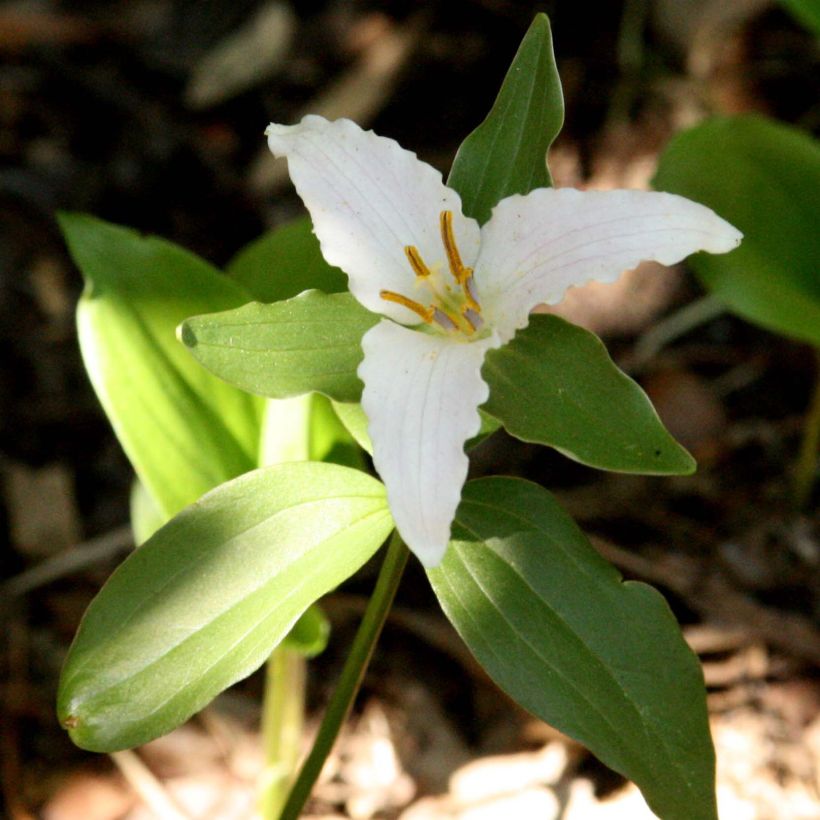

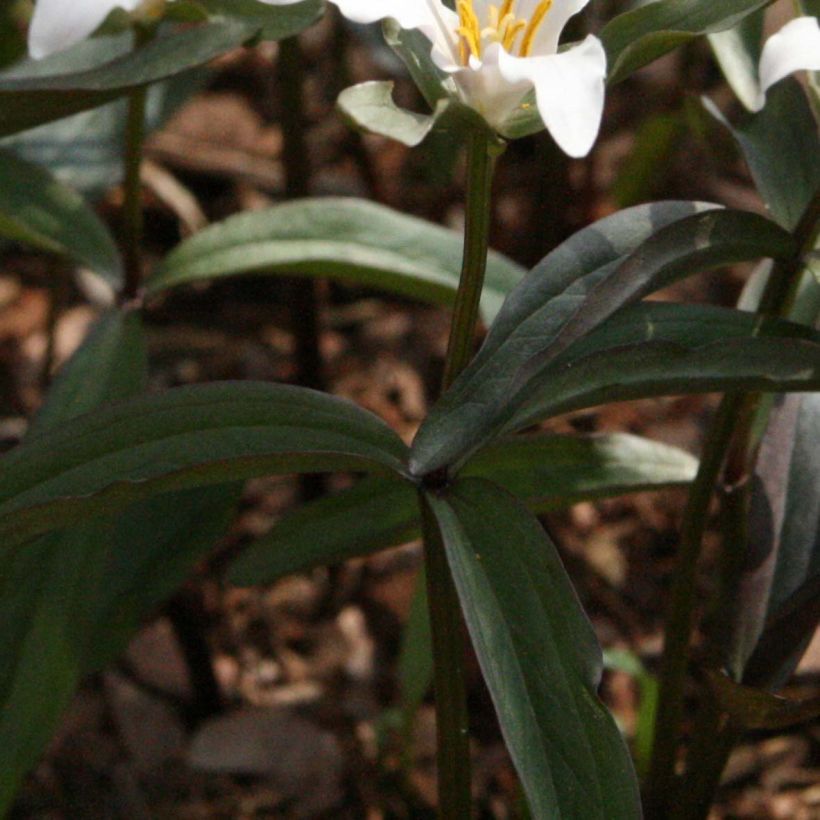

Flowering
Foliage
Plant habit
Botanical data
Trillium
pusillum
Liliaceae (Melanthiaceae)
Dwarf Trillium, Least Trillium, Bashful Trillium
North America
Planting and care
Trillium pusillum likes damp, moist soils during its growth and flowering period. It requires an acid, peaty or humus-rich soil, remaining damp. Position it in partial shade or in not too dense shade. The sunnier the exposure and the warmer the climate, the more the young plant will need moist soil. Plant it so that its rootstock is located 5 to 7 cm below the soil surface. Make a large hole and add leaf mould and well-rotted compost at planting. Ensure that the soil never dries out in summer, or the trillium may enter dormancy too quickly, which sometimes happens in the wild and does not really harm the health of the plant. Trillium pusillum withstands cold winters, down to -15°C, even without mulch on the soil. Divide the clumps in spring, after at least 5 to 6 years of cultivation.
This trillium takes time to settle in; it is not uncommon to have to wait 2 years after planting before seeing it flower for the first time.
Slugs and snails may attack the young shoots in spring: be sure to protect them.
Planting period
Intended location
Care
Planting & care advice
This item has not been reviewed yet - be the first to leave a review about it.
Haven't found what you were looking for?
Hardiness is the lowest winter temperature a plant can endure without suffering serious damage or even dying. However, hardiness is affected by location (a sheltered area, such as a patio), protection (winter cover) and soil type (hardiness is improved by well-drained soil).

Photo Sharing Terms & Conditions
In order to encourage gardeners to interact and share their experiences, Promesse de fleurs offers various media enabling content to be uploaded onto its Site - in particular via the ‘Photo sharing’ module.
The User agrees to refrain from:
- Posting any content that is illegal, prejudicial, insulting, racist, inciteful to hatred, revisionist, contrary to public decency, that infringes on privacy or on the privacy rights of third parties, in particular the publicity rights of persons and goods, intellectual property rights, or the right to privacy.
- Submitting content on behalf of a third party;
- Impersonate the identity of a third party and/or publish any personal information about a third party;
In general, the User undertakes to refrain from any unethical behaviour.
All Content (in particular text, comments, files, images, photos, videos, creative works, etc.), which may be subject to property or intellectual property rights, image or other private rights, shall remain the property of the User, subject to the limited rights granted by the terms of the licence granted by Promesse de fleurs as stated below. Users are at liberty to publish or not to publish such Content on the Site, notably via the ‘Photo Sharing’ facility, and accept that this Content shall be made public and freely accessible, notably on the Internet.
Users further acknowledge, undertake to have ,and guarantee that they hold all necessary rights and permissions to publish such material on the Site, in particular with regard to the legislation in force pertaining to any privacy, property, intellectual property, image, or contractual rights, or rights of any other nature. By publishing such Content on the Site, Users acknowledge accepting full liability as publishers of the Content within the meaning of the law, and grant Promesse de fleurs, free of charge, an inclusive, worldwide licence for the said Content for the entire duration of its publication, including all reproduction, representation, up/downloading, displaying, performing, transmission, and storage rights.
Users also grant permission for their name to be linked to the Content and accept that this link may not always be made available.
By engaging in posting material, Users consent to their Content becoming automatically accessible on the Internet, in particular on other sites and/or blogs and/or web pages of the Promesse de fleurs site, including in particular social pages and the Promesse de fleurs catalogue.
Users may secure the removal of entrusted content free of charge by issuing a simple request via our contact form.
The flowering period indicated on our website applies to countries and regions located in USDA zone 8 (France, the United Kingdom, Ireland, the Netherlands, etc.)
It will vary according to where you live:
- In zones 9 to 10 (Italy, Spain, Greece, etc.), flowering will occur about 2 to 4 weeks earlier.
- In zones 6 to 7 (Germany, Poland, Slovenia, and lower mountainous regions), flowering will be delayed by 2 to 3 weeks.
- In zone 5 (Central Europe, Scandinavia), blooming will be delayed by 3 to 5 weeks.
In temperate climates, pruning of spring-flowering shrubs (forsythia, spireas, etc.) should be done just after flowering.
Pruning of summer-flowering shrubs (Indian Lilac, Perovskia, etc.) can be done in winter or spring.
In cold regions as well as with frost-sensitive plants, avoid pruning too early when severe frosts may still occur.
The planting period indicated on our website applies to countries and regions located in USDA zone 8 (France, United Kingdom, Ireland, Netherlands).
It will vary according to where you live:
- In Mediterranean zones (Marseille, Madrid, Milan, etc.), autumn and winter are the best planting periods.
- In continental zones (Strasbourg, Munich, Vienna, etc.), delay planting by 2 to 3 weeks in spring and bring it forward by 2 to 4 weeks in autumn.
- In mountainous regions (the Alps, Pyrenees, Carpathians, etc.), it is best to plant in late spring (May-June) or late summer (August-September).
The harvesting period indicated on our website applies to countries and regions in USDA zone 8 (France, England, Ireland, the Netherlands).
In colder areas (Scandinavia, Poland, Austria...) fruit and vegetable harvests are likely to be delayed by 3-4 weeks.
In warmer areas (Italy, Spain, Greece, etc.), harvesting will probably take place earlier, depending on weather conditions.
The sowing periods indicated on our website apply to countries and regions within USDA Zone 8 (France, UK, Ireland, Netherlands).
In colder areas (Scandinavia, Poland, Austria...), delay any outdoor sowing by 3-4 weeks, or sow under glass.
In warmer climes (Italy, Spain, Greece, etc.), bring outdoor sowing forward by a few weeks.






























